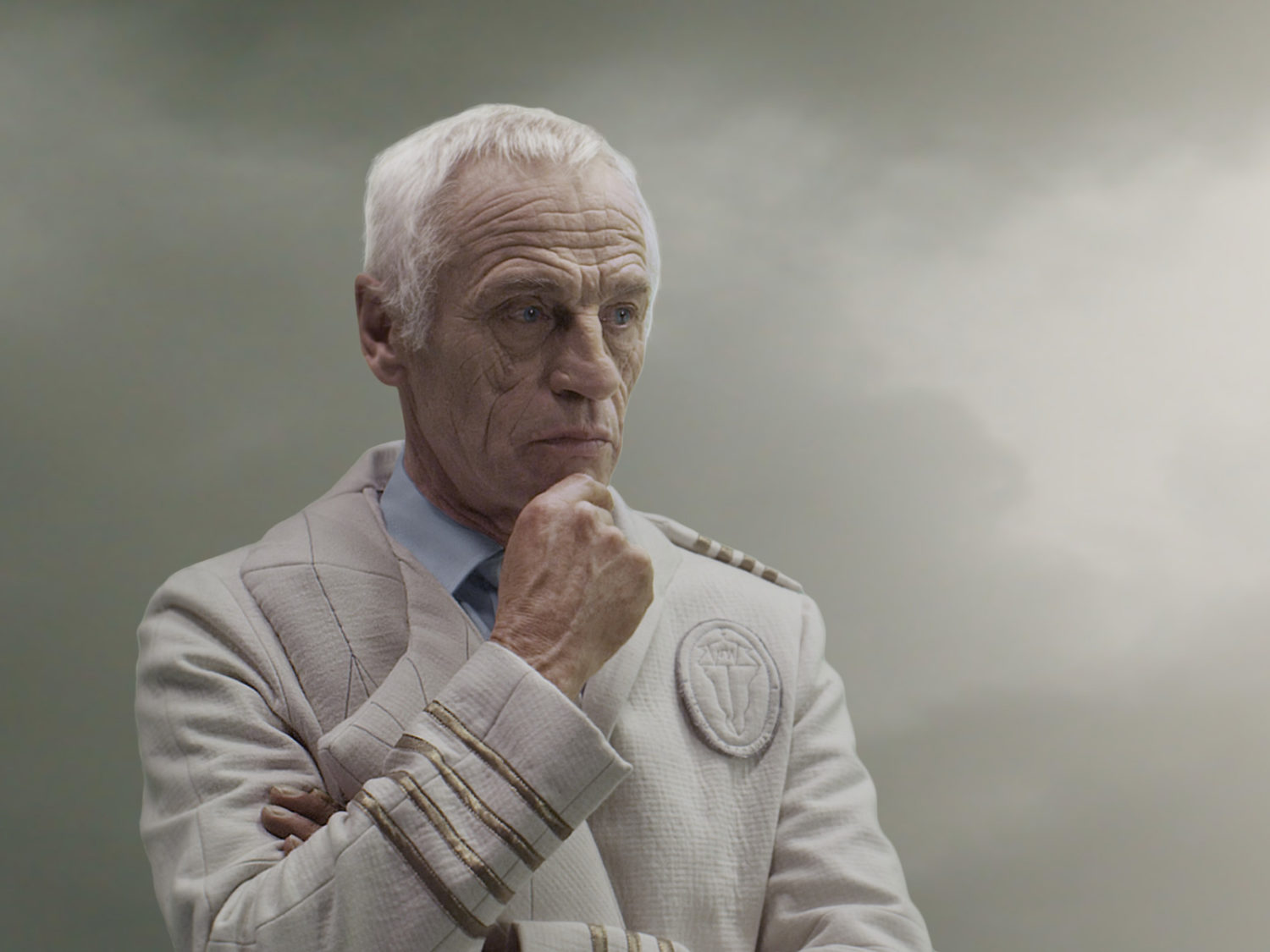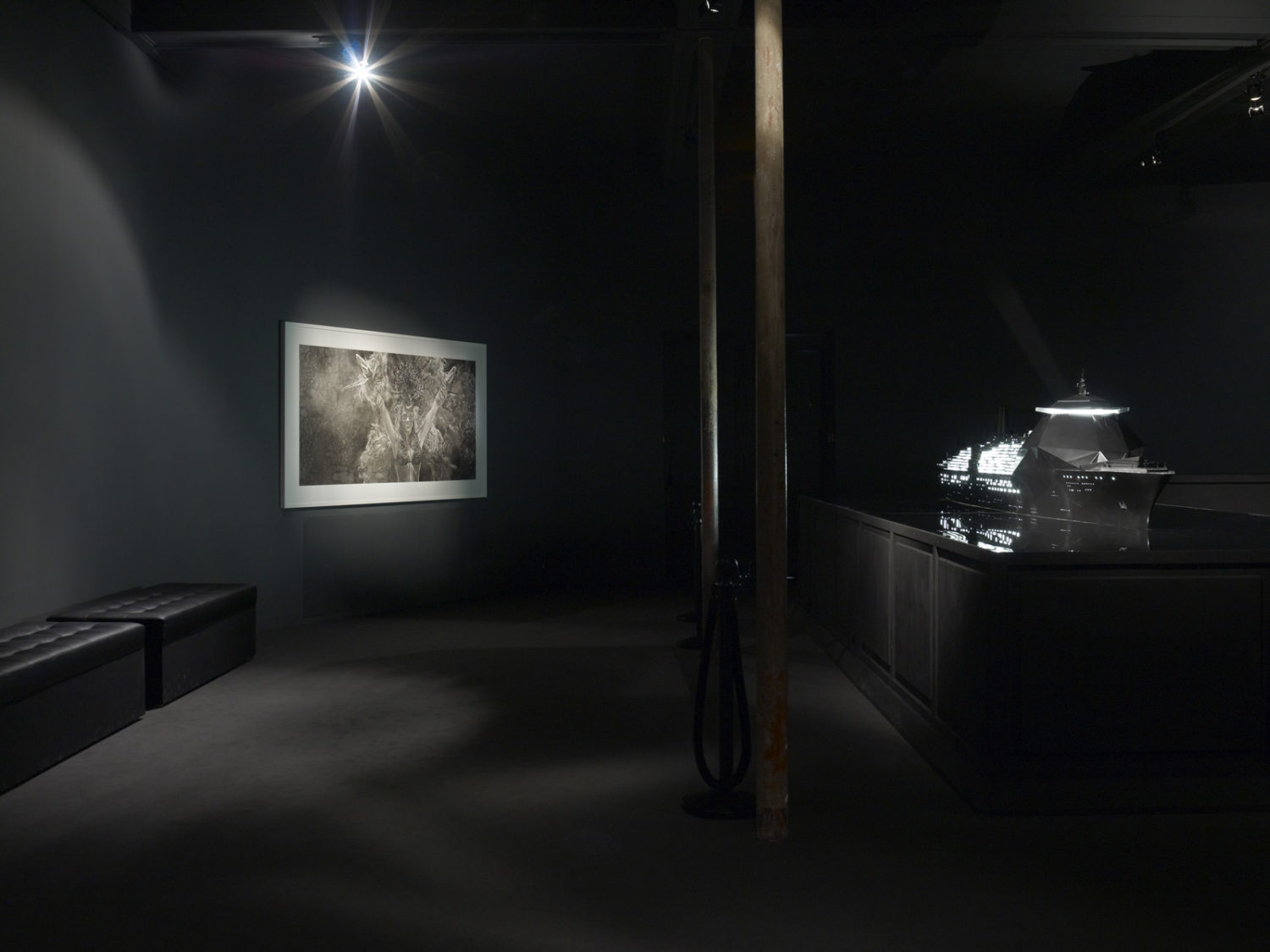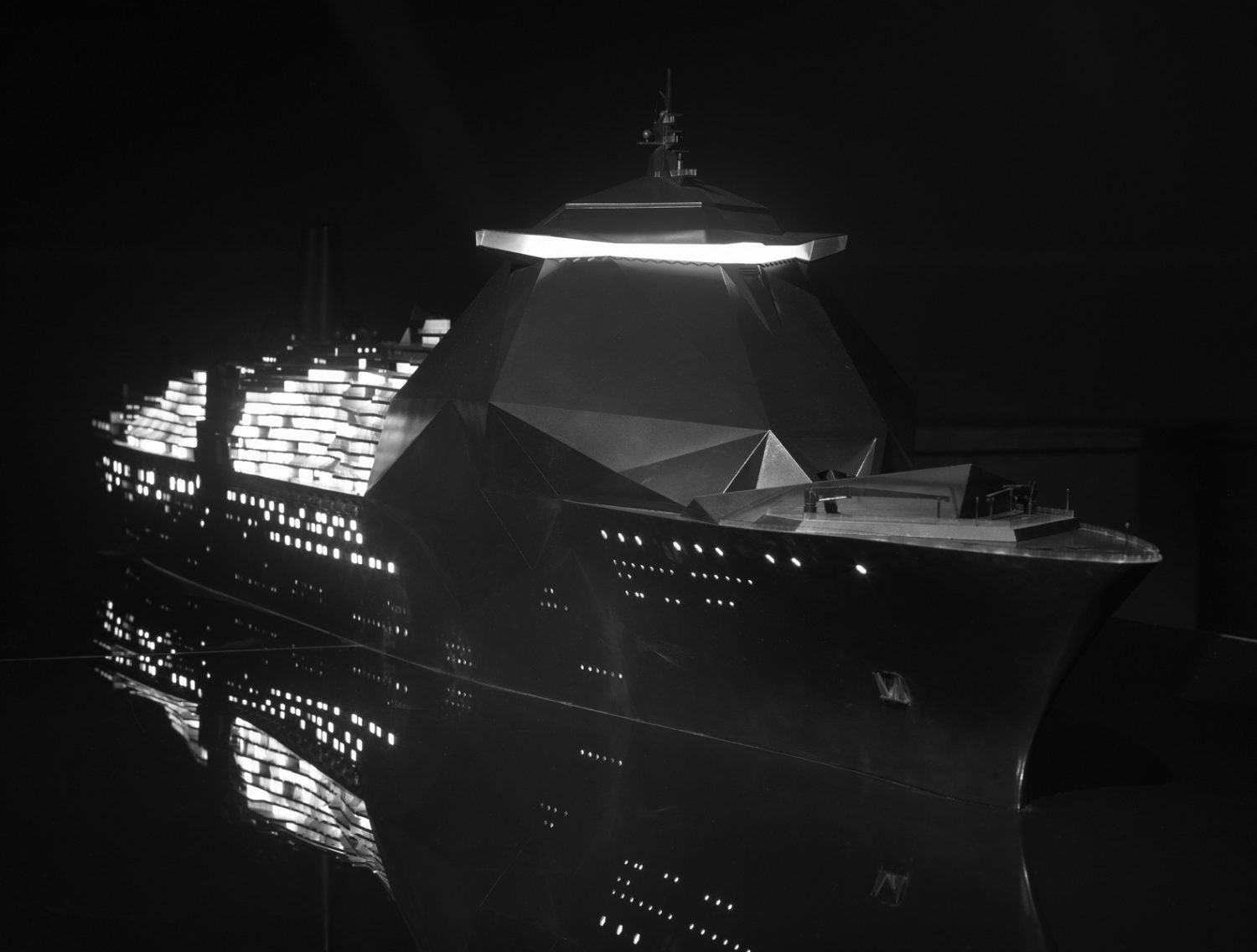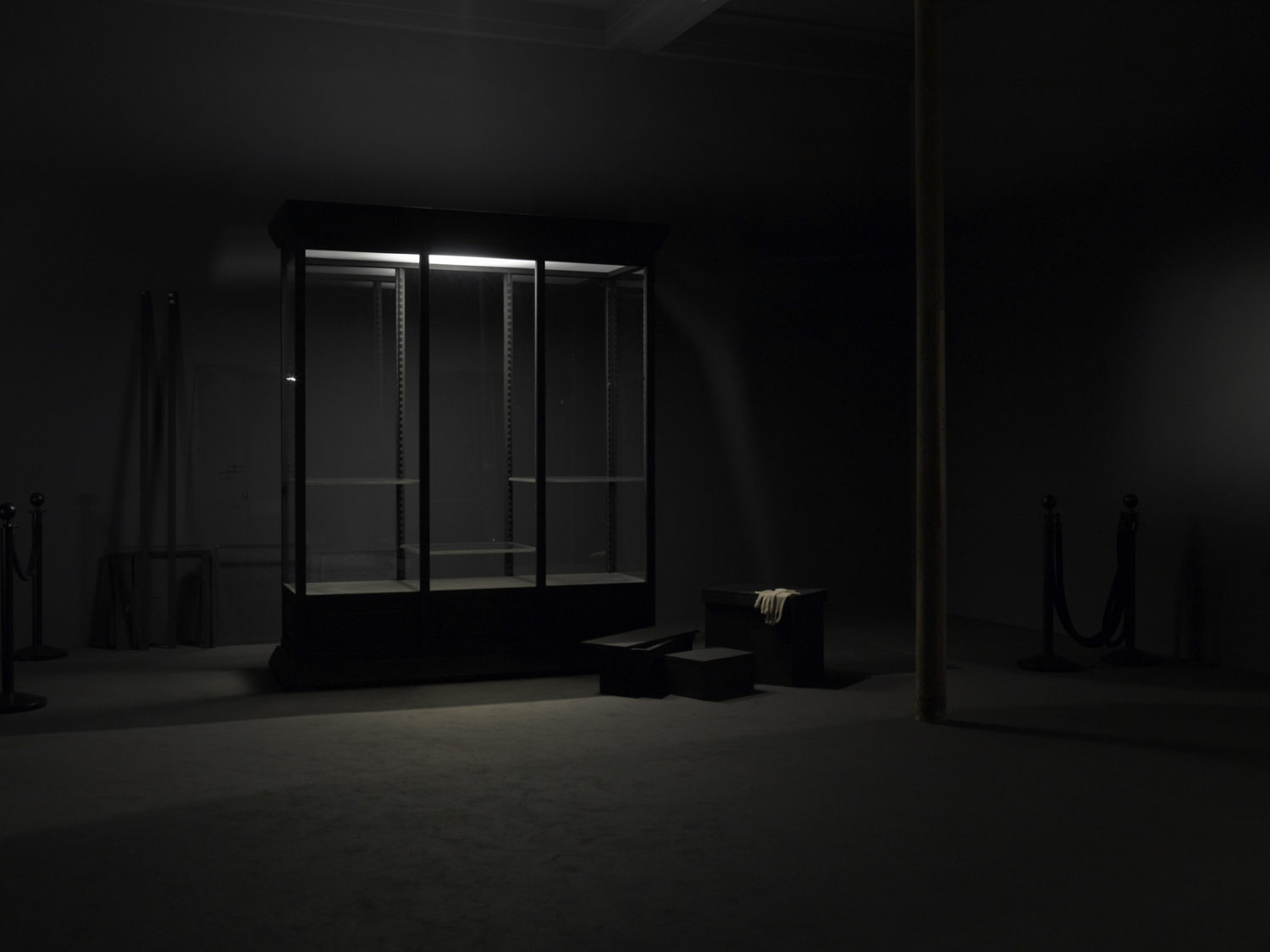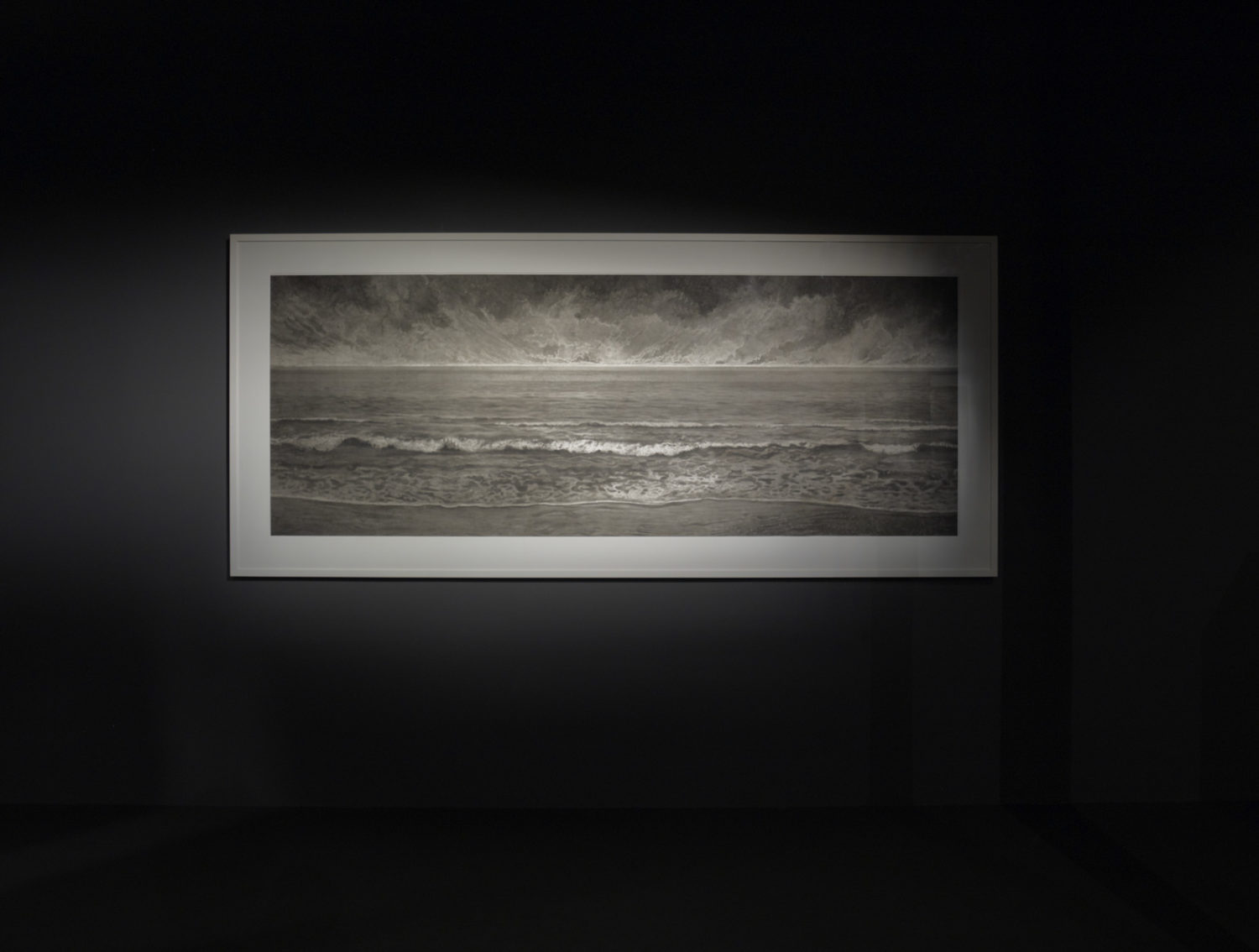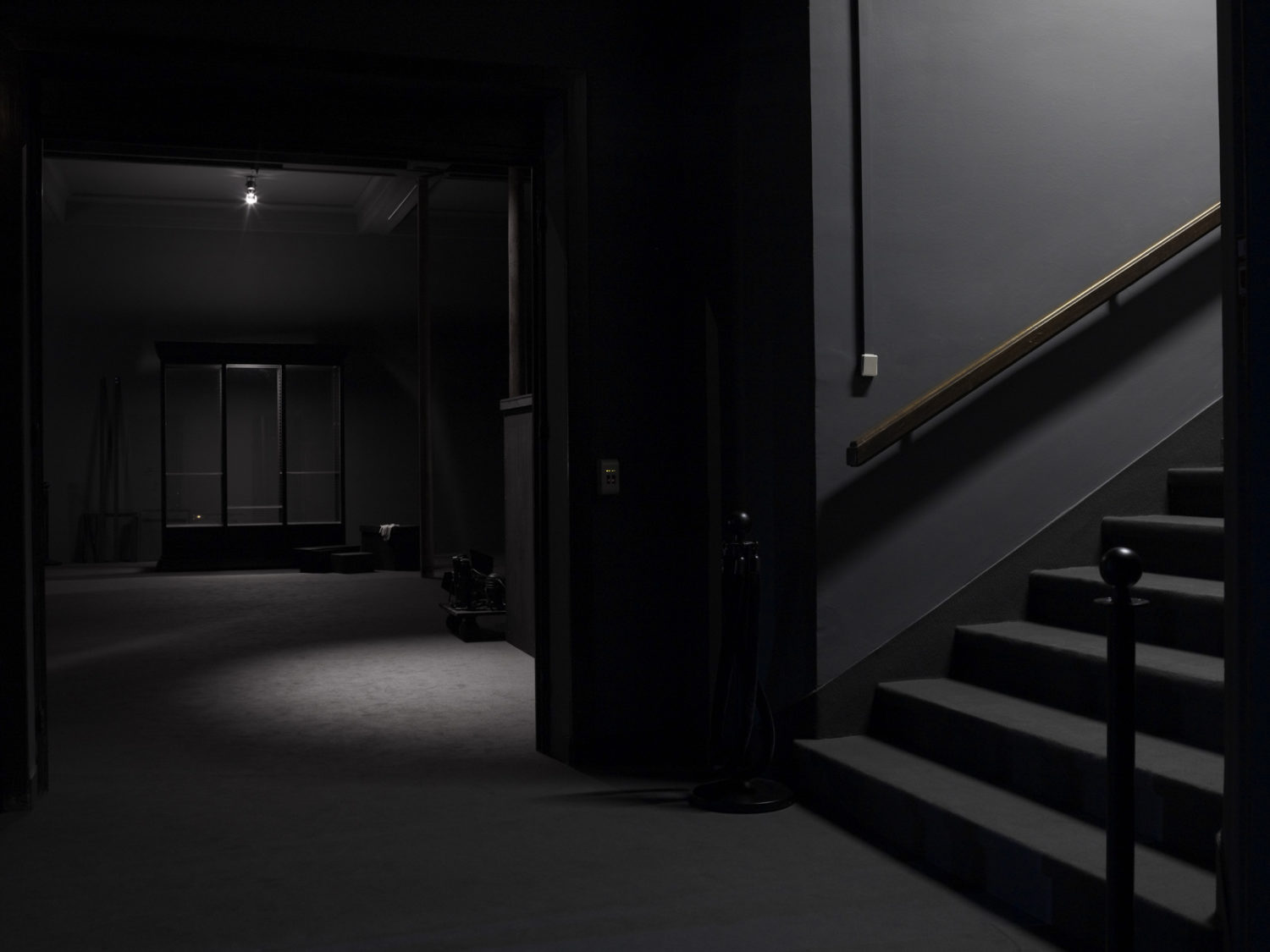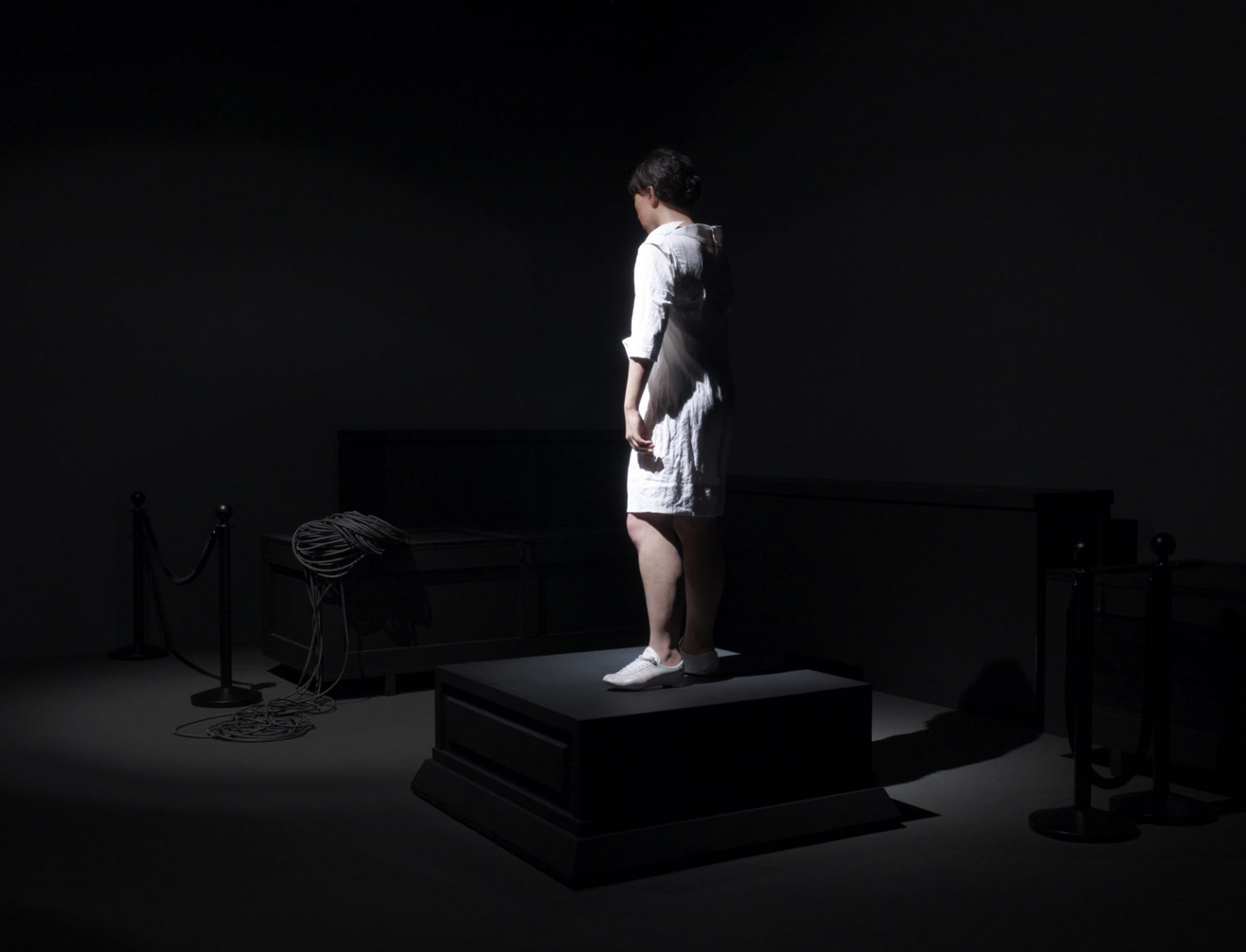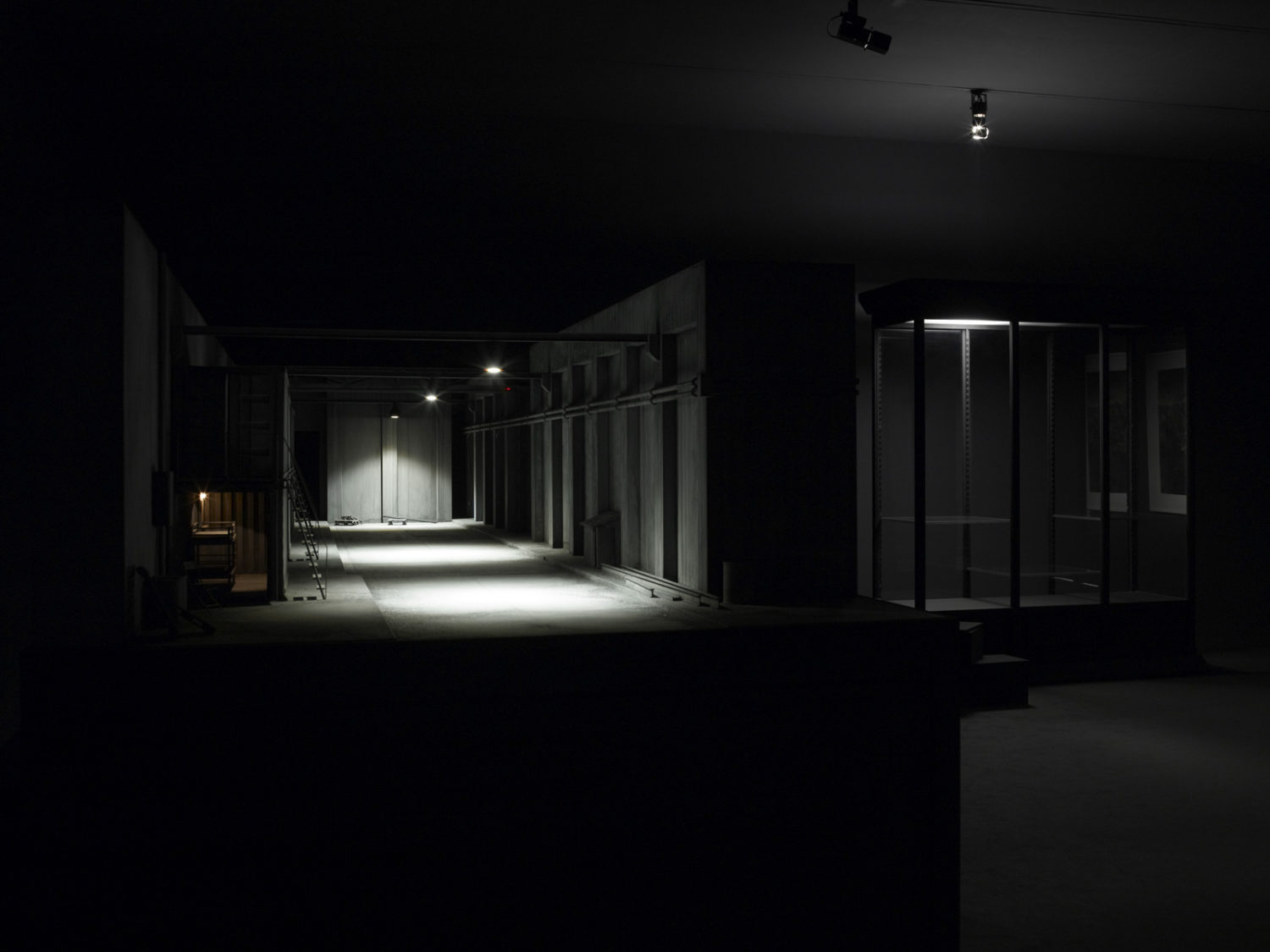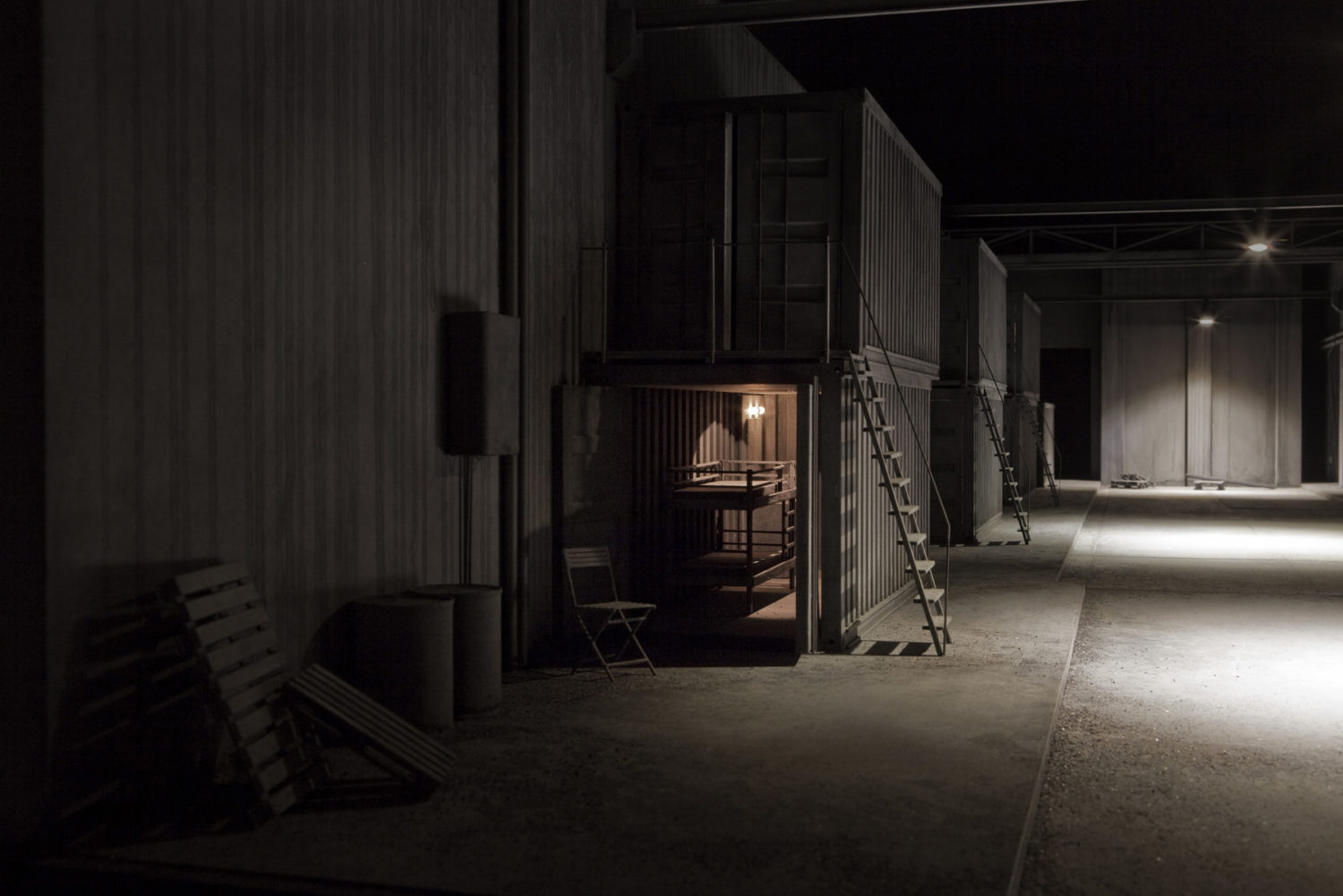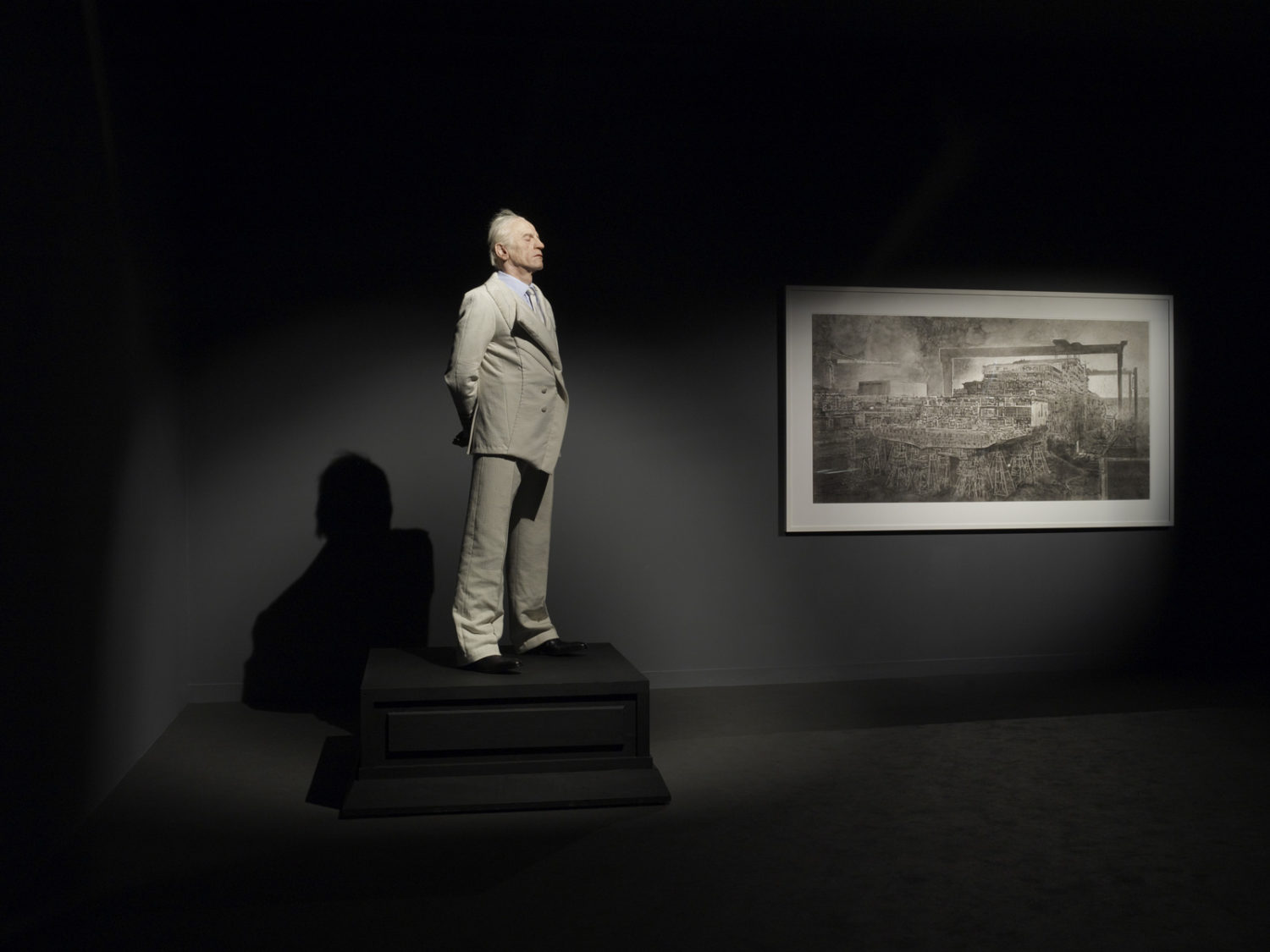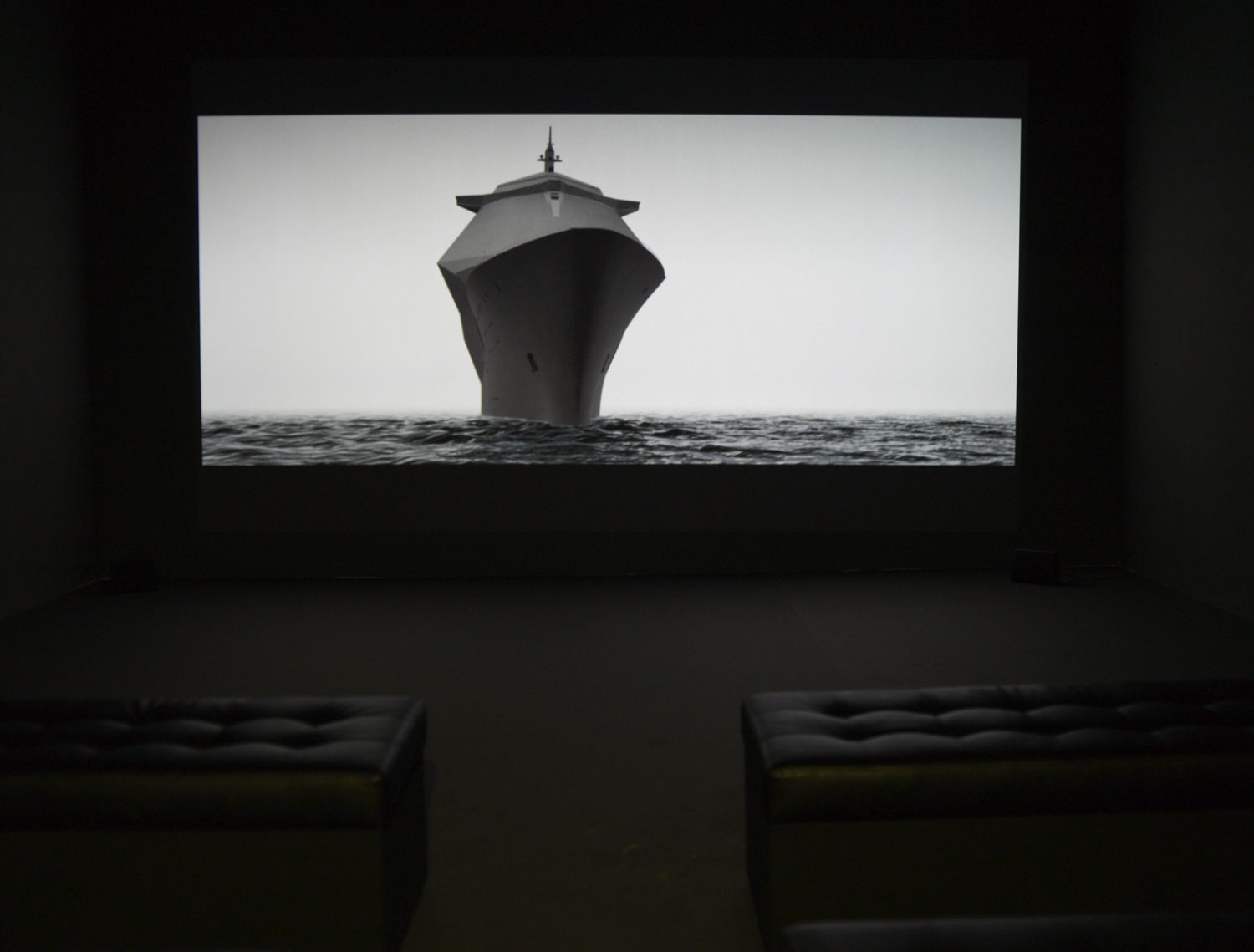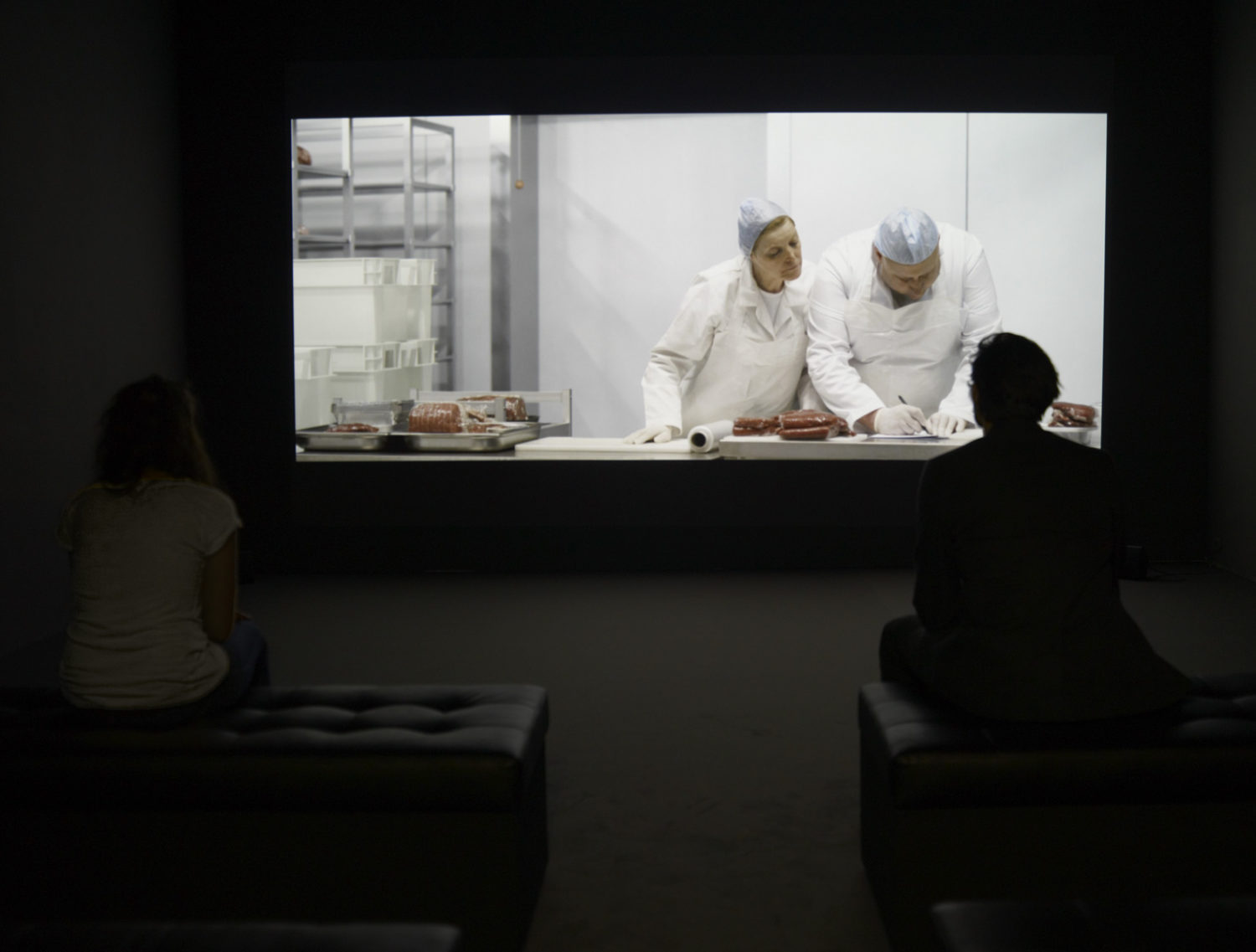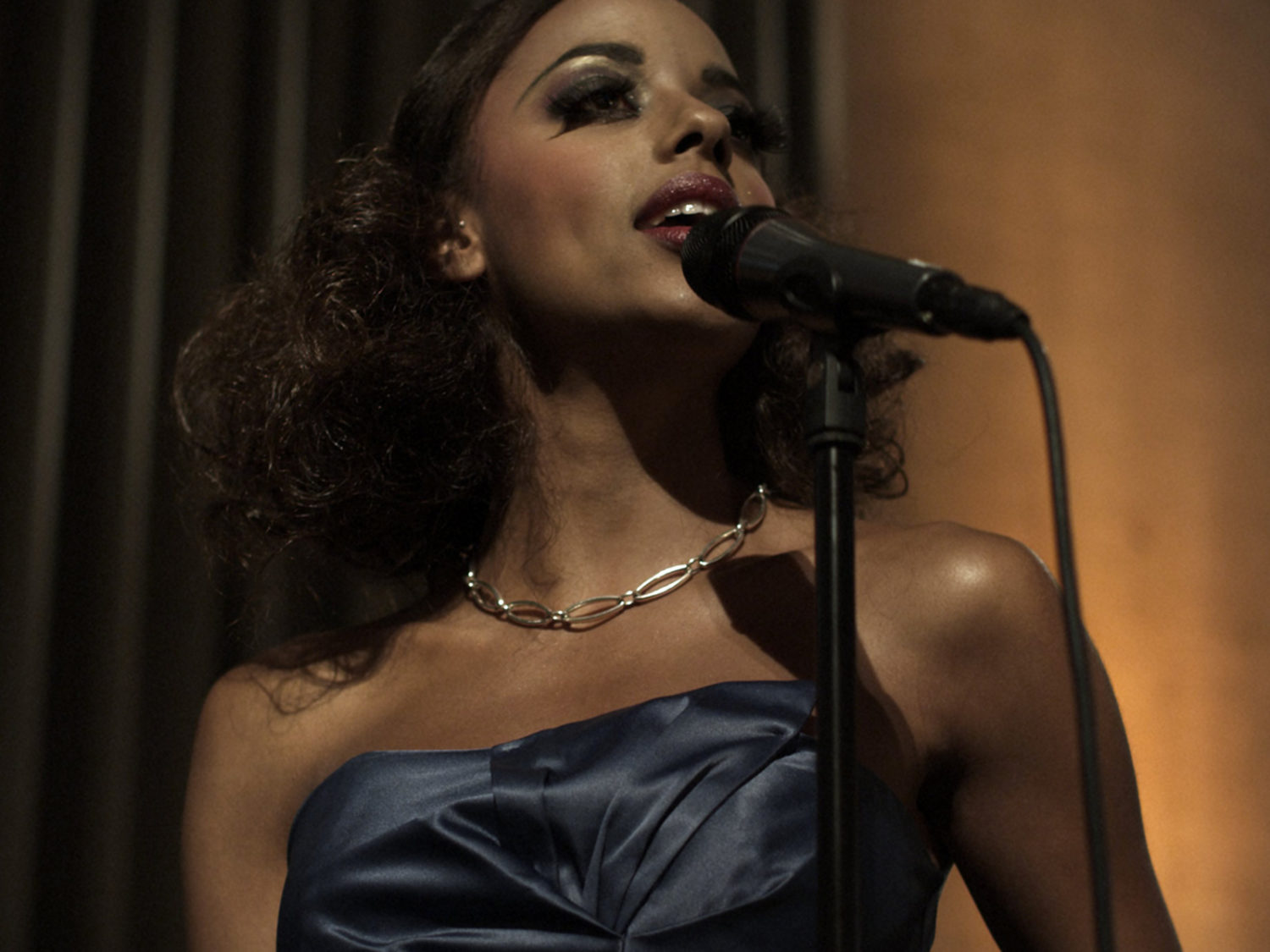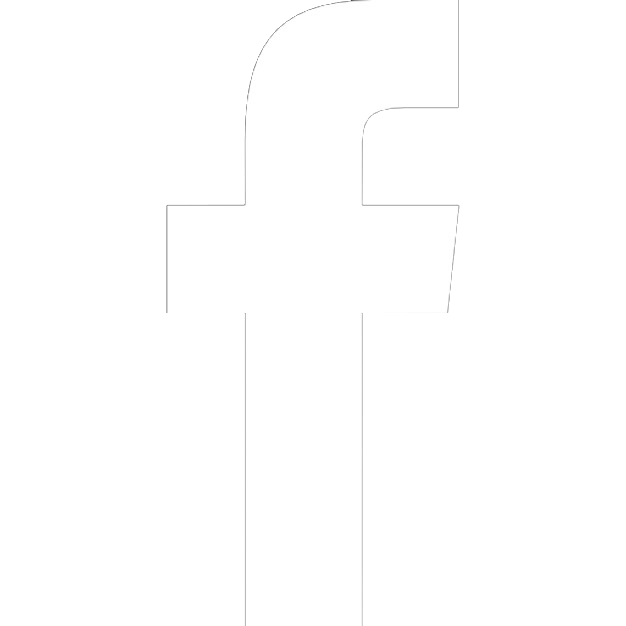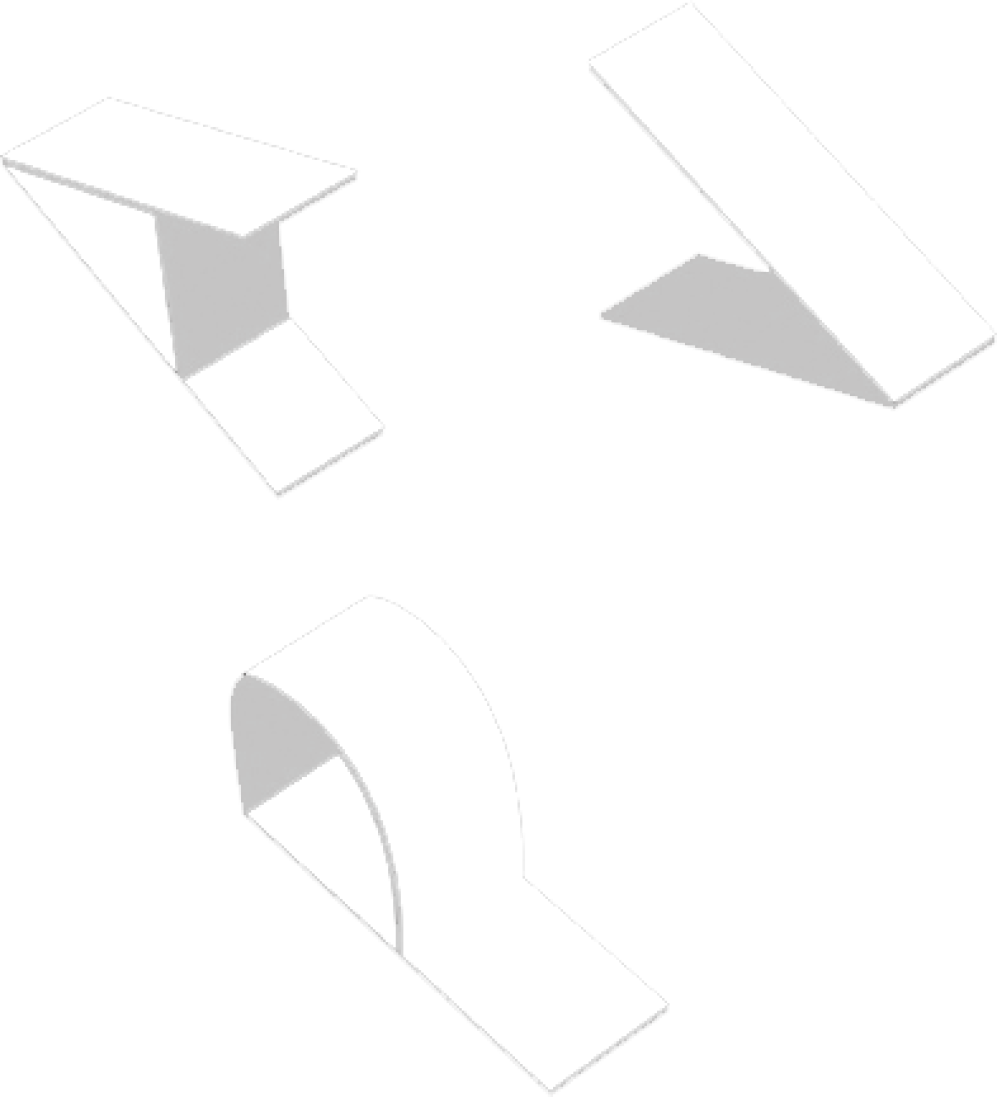Available documents
Exhibition
Hans Op de Beeck creates interworlds. Suspended between past and future, fiction and reality, his works sound out a mirage-like contemporary universe and a sensory vertigo where the familiar rubs shoulders with the strange. Drawing on literature and cinema, the artist articulates his visions according to a combinatory and scenographic model. From installation to sculpture, from video to animated film, from short stories to painting and drawing, from photography to sound material, the media he employs seem to converge on the definition of a topos: a mental theatre that projects the viewer into a reflexive social and cultural experience, the intimate thinking of the human condition.
Hans Op de Beeck’s first visual and literary works already explored the sense of life as a speculative object: we could cite Determination (1998), a life-size video projection in which a couple and their two children run into nowhere in a completely white space; or Coffee (1999), a long fixed shot that frames an elderly couple having coffee without exchanging a word. The artist also questions our relationship with public space and residential architecture, and tips our functional and pragmatic reference points over into pure poetry. The evocations of urban landscapes, intriguing and with an elegance akin to that of the futurist ruin, in the series Location (1998-2008) perform this uprooting of images, this faculty of transmuting the banal into a phantasmatic extension of the human psyche.
Increasingly, Hans Op de Beeck’s activity affirms itself as existential and generic: birth, sickness, suffering, the life force and death become motifs staged in formatted globalised environments, in which technology rises to the surface. This is the standardised architecture of T-Mart, a sculptural installation of an imaginary supermarket animated by video projection, or that of The Building, a sculpture and animated film forming a megalomaniacal hospital complex. These environments, considered as allegorical syntheses, interrogate the necessity of a sophisticated décor within which our lives are played out. What does it mean to eat, to heal or to die in such spatial matrices? How do we delimit the seductive power of these infrastructures, their at once repulsive and quasi-sublime dimensions? Have they not become desired-for prolongations of our own bodies in profound mutation?
Hans Op de Beeck’s work in this way captures the troubled vitality of the spaces that determine our behaviour and shape our sensibilities. Marked with melancholy, sometimes bearing a disabused critical charge, they assimilate our globalised world with a twilight dream of poisonous charm, an obscure and intangible labyrinth in which the human seeks to maintain control through diverse cultural rituals that the artist calls into question. There is nevertheless no moralism in this examination: while continually feeding an open analytic reflection, Hans Op de Beeck’s universe exacerbates the mystery, the elliptical and the sublime. His latest large format black and white watercolours confirm this dual approach, fragments of erratic nature or deserted interiors that echo as much film noir as Renaissance painting. In these compositions, the distancing induced by the frontal perspective never excludes the violent sensation of the gaze in fusion with the landscape. So far, so near, Hans de Beeck’s art is perfectly revealed by this unresolved dynamic: a cold distance that is also a fantastical hand-to-hand combat.
In 2008, during a study visit to Saint-Nazaire, Hans Op de Beeck was struck by the remarkable historical development of the port, whose shipyards produced the world’s greatest ocean liners. The last to date, the Queen Mary 2, appeared to him to be the ultimate metaphor for contemporary luxury, symptomatic of the western world’s relationship to certain concepts: free time, work and consumption, utopia. This was the starting point for the Sea of Tranquillity project, a new wide-ranging cycle in the artist’s work, to be exhibited in four European institutions.
Sea of Tranquillity: the title has multiple connotations. Translated literally into Dutch, Sea of tranquillity becomes “Zee van Rust”, an everyday expression describing the experience of a suspended moment, out of time, in peace and silence, an ocean of calm. In Latin “Mare Tranquillitatis” designates a lunar sea, where the space vessel Ranger 8 crashed in 1965; the module of the American Apollo 11 mission landed at the same spot, allowing mankind to walk on the Moon. Finally, the title allows for a little irony, if we consider what is offered by a cruise these days: activities without danger and without imagination, levelled down by the leisure industry.
Hans Op de Beeck’s exhibition project is conceived around a fictional vessel, christened Sea of tranquillity: one room houses the monumental sculpted version of this imaginary ship, accompanied by the various installations (design objects, mannequins and their costumes, the sculpture of a port landscape…) that punctuate the exhibition. A short film mixing live actors and 3D environments virtually plunges the viewer into the cavernous, strange and menacing liner as it softly cleaves the night. Another element, this time two-dimensional: a series of large black and white watercolours representing the places and people associated with this maritime fiction. As a whole, the exhibition is articulated in a very museographic setting: a form of narrative emerges, a scenography of memory, an immersive voyage dedicated to an enigmatic floating legend.
Éva Prouteau
Artworks
290,6 × 129,2 × 4,35 cm
Courtesy Xavier Hufkens, Brussels
249 × 133,9 × 4,35 cm
Courtesy Xavier Hufkens, Brussels
100 × 100 × 200 cm
Courtesy Galleria Continua, San Gimignano - Beijing - Le Moulin; Galerie Krinzinger, Vienna; Xavier Hufkens, Brussels; Marianne Boesky Gallery, New York; Galerie Ron Mandos, Rotterdam - Amsterdam
196 × 76 × 235 cm
Courtesy Galleria Continua, San Gimignano - Beijing - Le Moulin; Galerie Krinzinger, Vienna; Xavier Hufkens, Brussels; Marianne Boesky Gallery, New York; Galerie Ron Mandos, Rotterdam - Amsterdam
26 × 136,2 × 4,35 cm (landscape)
Courtesy Xavier Hufkens, Brussels
196 × 76 × 235 cm
Courtesy Galleria Continua, San Gimignano - Beijing - Le Moulin; Galerie Krinzinger, Vienna; Xavier Hufkens, Brussels; Marianne Boesky Gallery, New York; Galerie Ron Mandos, Rotterdam - Amsterdam
Approximately 100 × 100 × 220 cm
Courtesy Galleria Continua, San Gimignano - Beijing - Le Moulin
236,5 × 135,4 × 4,35 cm
Courtesy Xavier Hufkens, Brussels
135 × 400 × 140 cm
Courtesy Galleria Continua, San Gimignano - Beijing - Le Moulin
25 min
Courtesy Galleria Continua, San Gimignano - Beijing - Le Moulin; Xavier Hufkens, Brussels; Galerie Ron Mandos, Rotterdam - Amsterdam
Coproduced by the National Centre for Visual Arts - Ministry of Culture and Communication (F), the Flanders Audiovisual Fund (B), Emmanuelle and Michael Guttman and Le Fresnoy - Studio National des Arts Contemporains
Related residency
Biography
Born in Belgium in 1969.
Lives and works in Brussels.
Represented by Xavier Hufkens Gallery, Bruxelles ; Galleria Continua ; Galerie Krinzinger, Vienne ; Ronmandos, Amsterdam ; Marianne Boesky Gallery, New-York.
